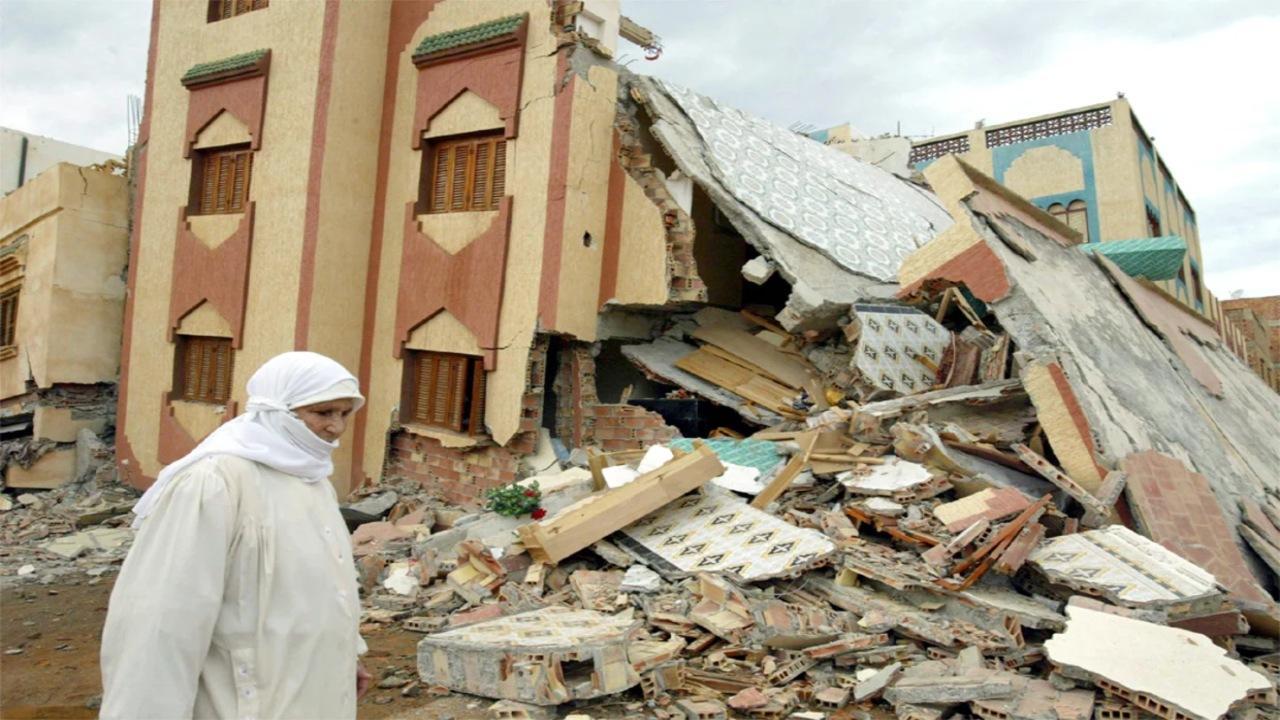
RABAT, Sept 9 (NNN-AGENCIES) — A powerful earthquake struck Morocco’s High Atlas mountains late on Friday, killing at least 296 people, destroying buildings and sending residents of major cities rushing from their homes.
The Interior Ministry said the number constituted a preliminary death toll and that 153 people had been injured. A local official said most deaths were in mountain areas that were hard to reach.
Residents of Marrakesh, the nearest big city to the epicentre, said some buildings had collapsed in the old city, a UNESCO World Heritage site, and local television showed pictures of a fallen mosque minaret with rubble lying on smashed cars.
Pan-Arab al-Arabiya news channel reported that five people were killed from one family, citing unnamed local sources.
The Interior Ministry, in its televised statement on the death toll, urged calm and said the quake had hit the provinces of Al Haouz, Ouarzazate, Marrakesh, Azilal, Chichaoua and Taroudant.
Montasir Itri, a resident of the mountain village of Asni near the epicentre, said most houses there were damaged. “Our neighbours are under the rubble and people are working hard to rescue them using available means in the village,” he said.
Further west, near Taroudant, teacher Hamid Afkar said he had fled his home and there had been aftershocks following the initial quake.
“The earth shook for about 20 seconds. Doors opened and shut by themselves as I rushed downstairs from the second floor,” he said.
Morocco’s geophysical centre said the quake struck in the Ighil area of the High Atlas with a magnitude of 7.2. The US Geological Survey (USGS) put the quake’s magnitude at 6.8 and said it was at a relatively shallow depth of 18.5km. Ighil, a mountainous area with small farming villages, is about 70km southwest of Marrakesh. The quake struck just after 11pm.
USGS’s PAGER system, which provides preliminary assessments on the impact of earthquakes, issued an orange alert for economic losses, estimating significant damage is likely.
Past events with this alert level have required a regional or national-level response, according to the US government agency.
USGS said that “the population in this region lives in structures that are highly vulnerable to earthquake shaking”.
Moroccan media reported it was the most powerful earthquake to hit the country to date.
In Marrakesh, some houses in the tightly packed old city had collapsed and people were working hard by hand to remove debris while they waited for heavy equipment, said resident Id Waaziz Hassan.
Footage of the medieval city wall showed big cracks in one section and parts that had fallen, with rubble lying on the street.
Internet connectivity was also disrupted due to power cuts, according to global internet monitor NetBlocks.
“We felt a very violent tremor, and I realised it was an earthquake,” said Abdelhak El Amrani, a 33-year-old.
“I could see buildings moving. We don’t necessarily have the reflexes for this type of situation. Then I went outside and there were a lot of people there. People were all in shock and panic. The children were crying and the parents were distraught.”
“The power went out for 10 minutes, and so did the (telephone) network, but then it came back on. Everyone decided to stay outside,” he added.
Another Marrakesh resident, Brahim Himmi, said he saw ambulances coming out of the old town and many building facades damaged. He said people were frightened and were staying outside in case of another quake.
“The chandelier fell from the ceiling and I ran out. I’m still in the road with my children and we’re scared,” said Houda Hafsi, 43, in Marrakesh.
Another woman there, Dalila Fahem, said there were cracks in her house and damage to her furniture. “Fortunately I hadn’t gone to sleep yet,” she said.
Fayssal Badour said he was driving when the earthquake hit.
“I stopped and realised what a disaster it was. It was very serious, as if a river had burst its banks. The screaming and crying was unbearable,” he said.
Hospitals in Marrakesh reportedly saw a “massive influx” of injured people.
People in Rabat, about 350km north of Ighil, and in the coastal town of Imsouane, about 180km to its west, also fled their homes, fearing a stronger quake, according to Reuters witnesses.
Videos shared on social media of the immediate aftermath of the quake showed people fearfully running out of a shopping centre, restaurants and apartment buildings and congregating outside.
The earthquake was also felt in neighbouring Algeria, where the Algerian Civil Defence said it had not caused any damage or casualties.
In 2004, at least 628 people were killed and 926 injured when a quake hit Al Hoceima in northeastern Morocco.
The 1980, the 7.3-magnitude El Asnam earthquake in neighbouring Algeria was one of the largest and most destructive earthquakes in recent history. It killed 2,500 people and left at least 300,000 homeless. — NNN-AGENCIES
